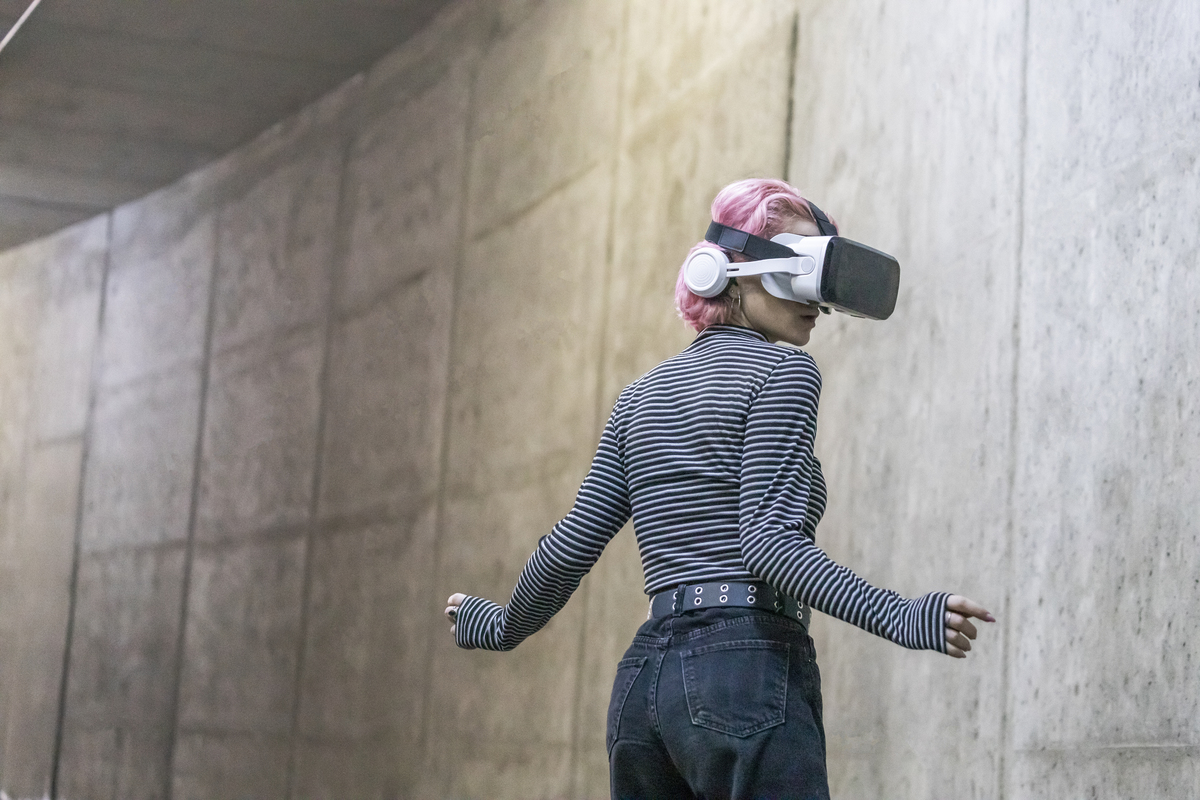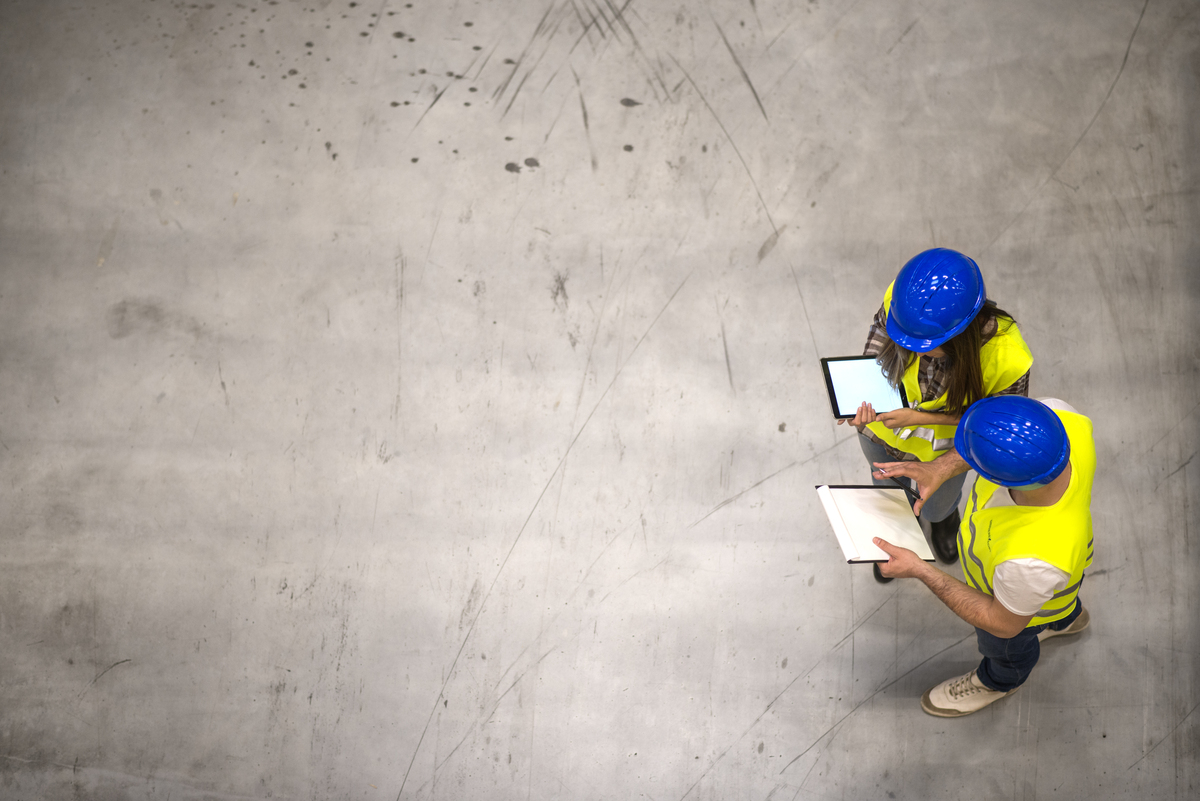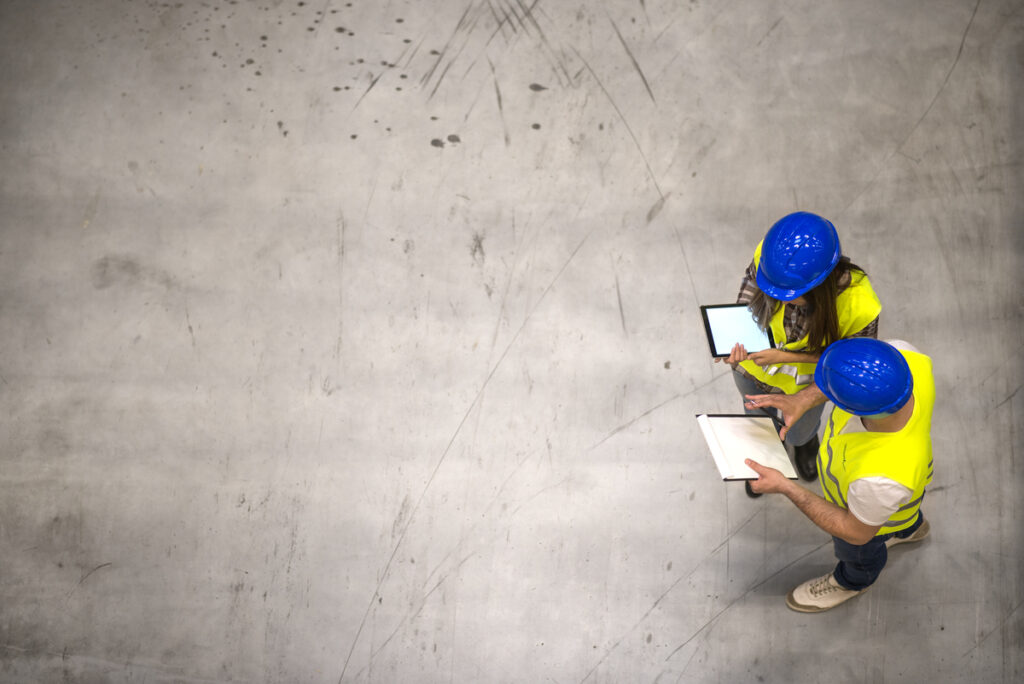Exclusive Neuroject Article: In the ever-evolving world of technology, no industry remains untouched – including construction. Our modern era has borne witness to a remarkable shift from traditional methodologies to more sophisticated, technologically-advanced strategies. This transformation has birthed an era where ‘Revolutionary Tech in Construction’ is no longer a concept of the future, but the bedrock of the present. This article delves into the revolutionary technological advancements that are reshaping the construction landscape, rapidly transforming it into a high-tech, efficient, and safer industry, harnessing construction technology for better outcomes.
We will explore the proliferation of Artificial Intelligence (AI), Robotics, the Internet of Things (IoT), and 3D printing technology, and their respective impacts on the construction industry. This extensive exploration aims to provide an in-depth understanding of these disruptive innovations and demonstrate how they are fundamentally changing the game in construction. As you navigate through this journey of technological revolution in the construction field, we hope to leave you not just informed, but inspired by the limitless possibilities that lie ahead.
The Importance of Technology in Construction
The multi-dimensionality and complexity of the construction industry, from opportunity management to operations and maintenance, are long-standing issues that are well known. Winning bids, hiring the right people, ensuring timely supply chain management, project execution, and aftercare are all intricate processes that require substantial efforts and expertise. However, in an era where we’ve evolved from the construction of the pyramids to towering skyscrapers, the industry is poised to take another significant leap forward through the application of modern technology.
In the context of such complexity, technology is emerging as a beacon of solution and innovation. The necessity for this shift towards technology in construction is driven by the industry’s need for increased productivity, cost-effectiveness, and sustainability. By implementing modern technological tools and practices, the construction industry has the potential to redefine its trajectory, improving the efficiency and effectiveness of these multi-dimensional processes. Digital design tools and construction software, for instance, can streamline opportunity management, while automated machinery and drones can enhance the supply chain and project execution aspects.
Revolutionary construction technology, or ‘ConTech,’ stands at the center of this industry’s transformation. It encapsulates the application of pioneering technologies like artificial intelligence, robotics, 3D printing, and the Internet of Things (IoT) in construction, capable of tackling the multi-faceted challenges the industry faces. Such advancements can revolutionize everything from talent management to operations and maintenance, improving safety measures, minimizing environmental impact, and disrupting traditional construction practices for the better.
In this context, the importance of technology in the construction industry goes beyond the merely advantageous; it becomes imperative. As we navigate deeper into the 21st century, technology will undoubtedly continue to be a key player in sculpting the construction landscape. The industry’s future will be defined by its adaptability and readiness to incorporate these groundbreaking technologies, transforming complexities into opportunities for advancement and growth. Therefore, the industry’s ability to embrace and adapt to technology will be instrumental in its evolution and success.

Historical Perspectives: The Evolution of Construction Technology
The history of construction technology offers a fascinating timeline of human ingenuity and innovation. Initially relying on rudimentary tools and simple techniques, humans were able to construct awe-inspiring monuments such as the Egyptian pyramids or the Roman Colosseum.
However, the Industrial Revolution in the 18th century marked a significant shift, paving the way for the evolution of construction technology. The invention of steam-powered machinery, for example, greatly accelerated construction processes, allowing for the construction of larger, more intricate structures. Materials such as steel and reinforced concrete became accessible, providing increased durability and flexibility in design.
As we entered the 20th century, the development of cranes and heavy machinery revolutionized construction, allowing us to build skyscrapers and bridges. Meanwhile, the advent of computer-aided design (CAD) tools in the late 20th century enabled architects and engineers to design more complex structures with greater accuracy and efficiency.

In the 21st century, construction technology continues to evolve at a rapid pace. The emergence of Building Information Modelling (BIM) has further streamlined the design and construction process, offering 3D visualizations and real-time data management. Technologies such as 3D printing and drone surveying are redefining the boundaries of construction, making previously unthinkable structures a reality.
Moreover, the adoption of renewable energy sources and sustainable materials in construction reflects our growing awareness of the environmental impact, marking a significant shift in the industry’s ethos.
The evolution of construction technology, thus, paints a vivid picture of human achievement. Each milestone not only stands as a testament to our capacity to innovate but also underscores the role of technology in shaping our built environment. From stone and bronze tools to cranes and 3D printers, construction technology continues to transform, promising exciting possibilities for the future.
Revolutionary Tech in Construction: An Overview
The construction industry is currently experiencing a technological renaissance, with cutting-edge technologies revolutionizing the traditional building process, contributing to increased efficiency, safety, and quality. This transformation is largely driven by the infusion of advanced hardware, software, materials, and tools.
In the software realm, Building Information Modeling (BIM) is leading the revolution. BIM allows the creation and manipulation of virtual, three-dimensional models of a structure, fostering improved collaboration and streamlined project management. The integration of artificial intelligence (AI) and machine learning (ML) is enhancing the predictive capabilities of these tools, enabling early detection of potential issues, optimizing resources, and mitigating risks.
The hardware category is witnessing ground-breaking advancements in the form of drones and autonomous vehicles. Drones are proving invaluable in site inspections, providing detailed aerial surveys for accurate data collection. Autonomous vehicles, on the other hand, are revolutionizing logistics and supply chain management within the industry, leveraging construction technology to improve efficiency and safety.
Moreover, in the sphere of construction materials, innovations such as self-healing concrete and translucent wood are paving the way for sustainable construction practices. These materials are not only environmentally friendly but also offer enhanced longevity and resilience. Nanotechnologies are also on the rise, infusing traditional materials with extraordinary properties.
Furthermore, technologies like augmented reality (AR) and virtual reality (VR) are gaining traction. They offer immersive experiences for project planning, visualization, and training purposes, leveraging construction technology to reduce errors and increase project success rates. These technologies are transforming the way construction professionals interact with their projects, enhancing efficiency and accuracy.
Finally, the Internet of Things (IoT) and 5G technology are expected to contribute immensely to real-time data monitoring and management, enabling smart construction sites that are more efficient and safer.
The convergence of these technologies is contributing to the digitization and automation of the construction industry, propelling it into an era marked by precision, sustainability, and increased productivity. However, with these advancements also come the challenges of integration and adoption, highlighting the need for continuous research, development, and education in this rapidly evolving sector.
In-depth Analysis: AI and Machine Learning in Construction
AI, or Artificial Intelligence, is a broad concept referring to machines or software exhibiting capabilities that mirror or mimic human intelligence. AI systems can learn, adapt, problem-solve, and even understand complex data. Machine Learning (ML), a subset of AI, involves systems learning from data, identifying patterns, and making decisions with minimal human intervention.
In the construction industry, AI and ML have found extensive applications, revolutionizing many aspects of the sector. They have been instrumental in improving efficiency, safety, and decision-making while mitigating the risks of human error.
For example, AI-driven predictive analytics can analyze past data to forecast project timelines, enabling project managers to anticipate potential delays and streamline workflow. Autonomous equipment, another AI-based application, reduces the need for human intervention in dangerous or repetitive tasks. Drones, powered by AI, are used for site inspections, ensuring safety and increasing accuracy, utilizing construction technology for precise data collection.
Machine learning plays a crucial role in enhancing construction processes. ML algorithms can analyze complex datasets to optimize resource allocation, thus minimizing waste and improving sustainability. For instance, using ML, construction companies can predict the precise amount of material required for a project, eliminating the possibility of over-purchasing and under-utilization.

AI-powered Building Information Modelling (BIM) systems revolutionize design and planning processes by leveraging artificial intelligence technology to deliver advanced 3D visualizations of projects. This innovative approach enables teams to proactively identify and address potential structural challenges, empowering them to make well-informed decisions. By integrating construction technology, these systems enhance visualization capabilities and facilitate effective problem-solving throughout the project lifecycle.
Moreover, AI and ML technologies are increasingly being used for quality control. Smart systems can spot flaws or irregularities in construction that might be overlooked by human inspectors. This feature helps in maintaining high-quality standards and avoiding costly post-construction repairs.
In conclusion, AI and machine learning have immense potential to revolutionize the construction industry. Their applications can significantly improve project efficiency, safety, and quality, transforming traditional construction practices into a more data-driven and predictive approach. As these technologies continue to evolve, we can expect even more profound innovations in the construction industry, harnessing the power of construction technology for a more advanced and efficient construction sector.
Suggested article for reading: Artificial Intelligence or AI in Construction; A Comprehensive Guide to 2024
Breakthroughs in Building Materials and Techniques
Building materials and construction techniques have evolved tremendously over the years, marking significant breakthroughs in construction technology that are dramatically reshaping the industry. The primary focus has shifted towards developing sustainable, cost-effective, and durable materials while improving construction methodologies for more efficient and safer practices.
New, innovative building materials are making waves in the construction industry. Self-healing concrete, for instance, has redefined the durability standard in construction. Embedded with bacteria that produce limestone, this concrete possesses the astounding capability of healing its own cracks, reducing maintenance costs and enhancing longevity. Another game-changer, aerogel insulation, boasts incredibly high thermal resistance, allowing architects to design energy-efficient buildings more easily.
Bamboo is another important material in construction technology, once considered a primitive building material, is being rediscovered due to its remarkable strength-to-weight ratio, sustainability, and affordability. Mass timber products, such as cross-laminated timber (CLT) and glue-laminated timber (glulam), are replacing traditional materials in large-scale projects, offering strength comparable to concrete and steel with the added benefit of carbon sequestration.

Meanwhile, advanced construction techniques are revolutionizing the sector. Prefabricated and modular construction methods, which entail the off-site production of building components, are gaining popularity. These methods expedite construction timelines, minimize waste, and ensure better quality control, contributing to the broader advancement of construction technology.
3D printing is another groundbreaking technique that is revolutionizing construction. It enables the rapid, on-demand production of complex architectural elements, paving the way for more customized and creative designs. Moreover, it significantly reduces waste, aligning with the industry’s push towards sustainability, and incorporating construction technology for better outcomes.
Robotics and AI have also entered the construction realm, offering precision, efficiency, and safety benefits. Drones are being used for site surveys and inspections, while autonomous machinery and AI algorithms are enhancing construction planning and execution.
These breakthroughs in building materials and techniques symbolize a paradigm shift in the construction industry. The future holds exciting possibilities as we continue to explore and leverage these innovative solutions to design and build more sustainable, efficient, and awe-inspiring structures.
Digitalization and Connectivity: The Impact of IoT and Big Data
Digitalization and connectivity, in the current technological epoch, hold paramount importance, particularly with the emergence of the Internet of Things (IoT) and Big Data. IoT refers to a network of interconnected devices that exchange data with each other, using the internet as the underlying conduit. On the other hand, Big Data encompasses extensive datasets that are too voluminous and complex to process with traditional data processing methods.
In the context of construction, these construction technologies are driving major shifts, incorporating construction technology to enhance productivity, efficiency, and safety. Construction sites, traditionally labor-intensive, are now incorporating IoT and Big Data into their processes to enhance productivity, efficiency, and safety. For instance, IoT devices like sensors and automated machines can monitor site conditions, machinery health, and worker safety in real time. This constant stream of data facilitates predictive maintenance, reducing equipment downtime and maintenance costs.
Additionally, with IoT devices, construction teams can access real-time information about on-site conditions, enabling them to make informed decisions promptly. For example, weather sensors in construction can anticipate adverse conditions, preventing damage and ensuring worker safety through construction technology.

Meanwhile, Big Data in construction helps in the analysis of large-scale information sets. As a consequence, construction companies can conduct predictive analytics, trend analysis, and risk management more effectively. This valuable insight can improve strategic planning, budgeting, and resource allocation, thereby mitigating risk and avoiding costly overruns.
Combining IoT with Big Data further amplifies the benefits. The massive influx of data from IoT devices can be analyzed using Big Data tools, providing profound insights that traditional data processing methods couldn’t provide. Construction companies can thus optimize their operations, predict potential issues, and mitigate risks before they occur, harnessing the power of construction technology.
In conclusion, the amalgamation of IoT and Big Data is revolutionizing the construction industry. It offers numerous advantages, from increased efficiency and safety to improved decision-making and risk mitigation. As digitalization and connectivity continue to evolve, these technologies will become even more integral to construction practices, shaping a future where projects are delivered on time, within budget, and with fewer safety incidents.
Challenges and Future Prospects: The Path Ahead
The construction industry stands on the brink of a major technological transformation, which is significantly influenced by emerging construction technology. Yet, it grapples with various challenges that could potentially hinder its progress. Key among these is the reluctance to adapt to new technological systems, often stemming from a lack of understanding or skepticism toward the practical value these advancements can bring. Additionally, the industry faces technical and financial difficulties in integrating cutting-edge technologies into existing processes, not to mention the issue of potential disruption to ongoing projects.
Nevertheless, the benefits of adopting technology in construction, specifically advancements in construction technology, cannot be overstated. Innovations such as Building Information Modelling (BIM), Artificial Intelligence (AI), and robotics promise efficiency, safety, and sustainability. For instance, BIM allows stakeholders to visualize the entire project lifecycle, thus facilitating informed decision-making. AI can automate repetitive tasks, reduce human error, and predict project risks, while robotics can perform hazardous tasks, thereby enhancing worker safety.
The future prospects are exciting. With the advent of technologies like 3D printing, the Internet of Things (IoT), and drones, the industry has the potential to drastically reduce construction time, minimize waste, and optimize resources. 3D printing can facilitate the quick production of complex components, IoT can provide real-time data for effective site management, and drones can enable faster and safer site inspections.
Nonetheless, the path ahead is not devoid of obstacles. To fully realize these potentials, it’s critical to address the prevailing challenges. Training programs can mitigate the knowledge gap and instill confidence in new technology adoption. Furthermore, companies should explore strategies for smooth technological integration to minimize disruption, ensuring seamless implementation of construction technology. Government support in the form of policies and incentives can also expedite the technology adoption process.
In summary, while challenges abound in the quest for technological innovation in the construction industry, the future prospects are promising. With the right strategies and support, the construction industry could well be on its way to a technologically enhanced future. The path ahead may be fraught with challenges, but the potential rewards make it an exciting journey to embark on, utilizing construction technology for a more efficient and sustainable construction industry.
Suggested article for reading:
Lean Construction Principles and Practical Examples
Resources:
For all the pictures: freepik





